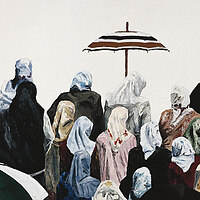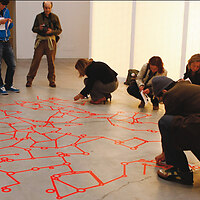Imagination is a very real part of human existence. Experiences are understood with the help of imagination, and imagination helps to convey experiences to others. Imagination is the vehicle through which people can address and respond to each other. Because I can imagine how you feel, I have compassion. Or because I can imagine the consequences of what you do, I judge your acts. Also, imaginary experiences can be as real as experiences in real life and bring well-being or suffering as result. When human beings identify deeply with a situation, imagination becomes part of perception.
Networks produce different types of images and visualisations of data. But imagination needs more. For imagination to flourish, people need to share ideas and perceptions they have, they need to identify with each other. Imagination and fiction play an important role in process of identification and participation and one needs to be able to distinct between what
is beneficial and detrimental to one’s self.
Self-witnessing is fundamental to be able to participate in healthy and reliable ways, also in online worlds. It helps to embrace what is actually happening now as well as opening up one’s curiosity, which facilitates engagement with what is happening now. In professional contexts this self-witnessing is crucial for being able to relate to one’s own role in a productive manner.
Even in hybrid contexts the physicality of experience plays a significant role while it is clear that new formats for disembodied presence are being introduced. How the impact of the continuous absence of human body will evolve is unclear. It appears that a clear set of rules of engagement makes it possible for human beings to participate. Friction and resistance between systems and human beings who participate, can lead to engagement.
Because people engage and participate, new structures emerge and also systems adapt. Rhythms between people and rhythms between systems and people adapt to each other. Such integration, between different rhythms in social, technological and biological realities, needs to be motivated and inspired for becoming part of human experience. A robust structure in rhythm allows people to create their own experience in between in which personal empty time-space emerges.
To create moments of attention, in which meaning can emerge, is a great challenge in a hybrid context in which most perception is peripheral. There is so much information and there are so many connections.
Through for example music human beings experience time and awareness of attention can be nurtured. Specific moments of attention are those in which shared experience is celebrated. Such moments are of significance for human beings to endure and enjoy periods of engagement.




